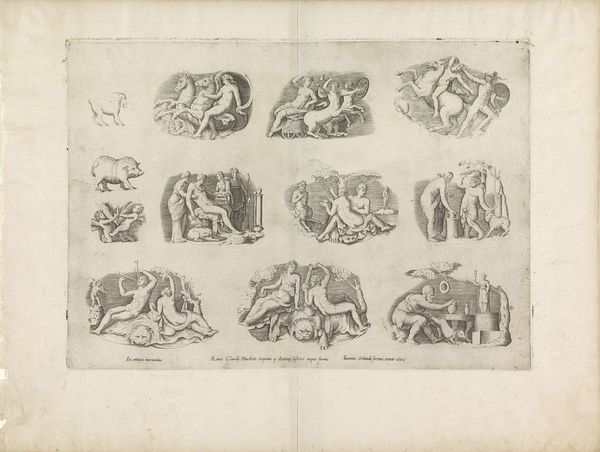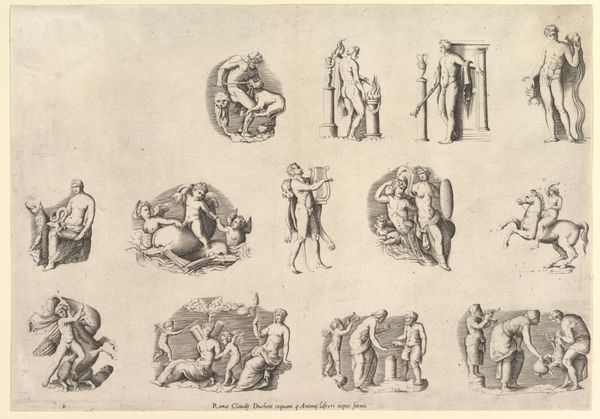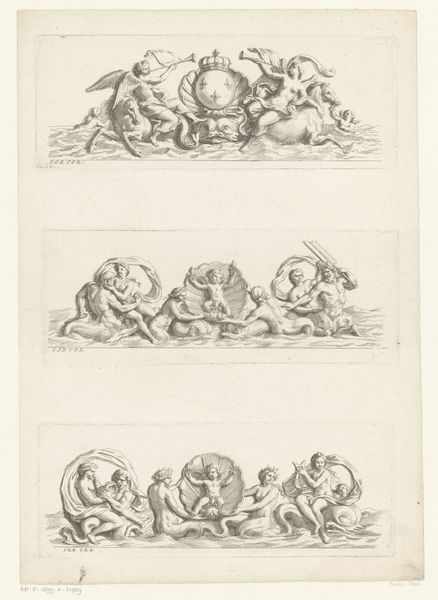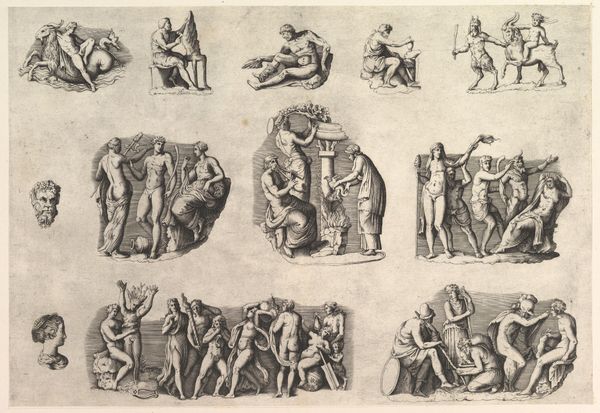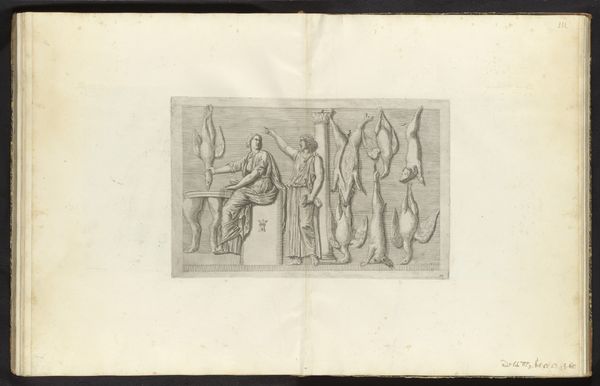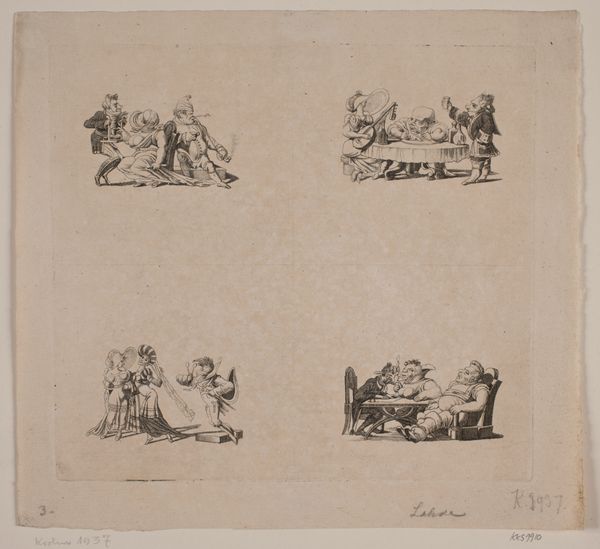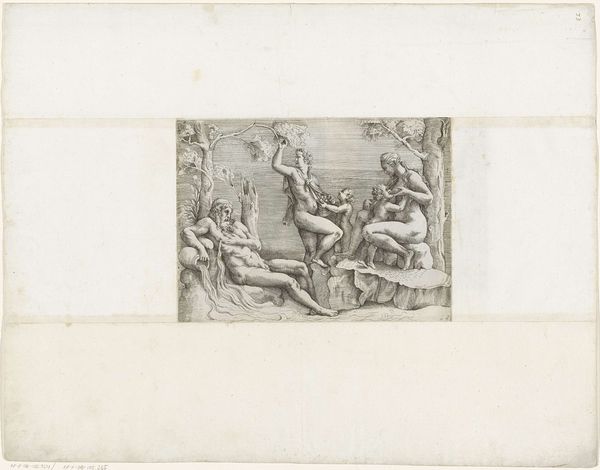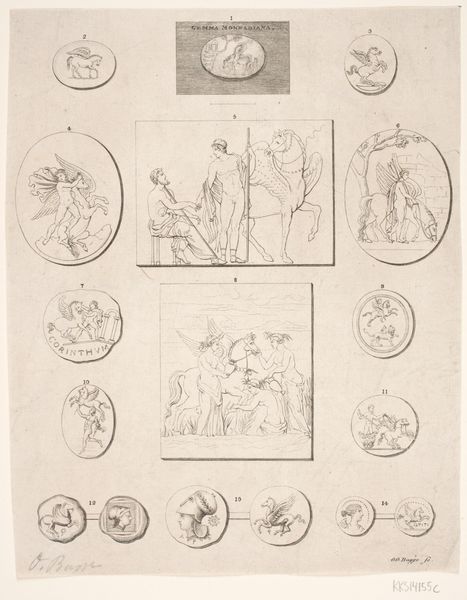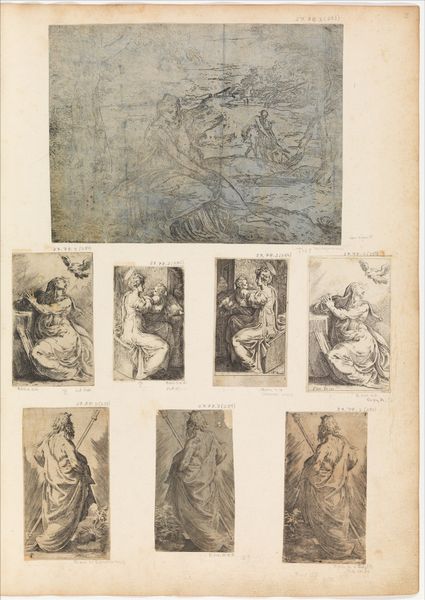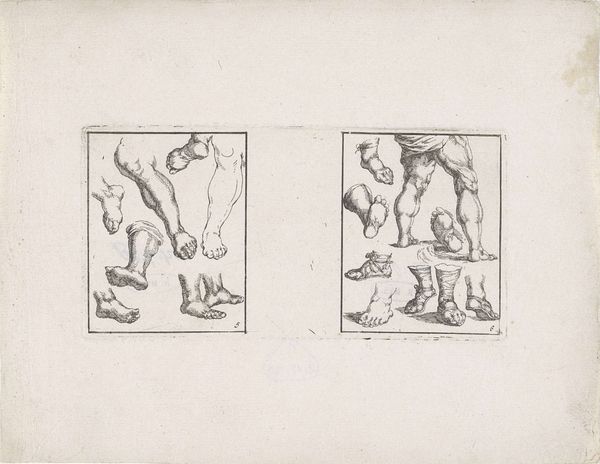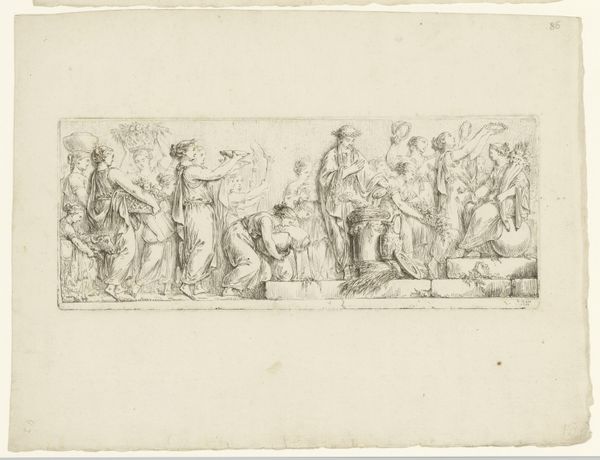
#
aged paper
#
toned paper
#
light pencil work
#
hand drawn type
#
personal sketchbook
#
ink drawing experimentation
#
pen-ink sketch
#
pen work
#
sketchbook drawing
#
sketchbook art
Dimensions: height 305 mm, width 428 mm
Copyright: Rijks Museum: Open Domain
Editor: We’re looking at "Antieke cameeën" from 1602, by Enea Vico, housed here at the Rijksmuseum. It’s a pen and ink sketch on toned paper, a page seemingly torn from a sketchbook. There’s a cluster of classical figures, almost like a visual index. What do you see in this collection of images? Curator: Immediately, I see a reverence for antiquity. Vico isn't just copying these figures; he's participating in a visual dialogue with the past. These cameos, originally small, intimate objects, become monumental through his close study and recreation. Consider how the poses and gestures—common in Roman art—would have instantly resonated with educated viewers. It's a kind of cultural shorthand, wouldn't you agree? Editor: I see that, like a shared language. Does the medium itself—pen and ink, the sketchbook—play a role? Curator: Absolutely. Pen and ink allow for fine detail, echoing the precision of cameo carving. But more importantly, the sketchbook format suggests a personal engagement. Vico is working through ideas, understanding not just *what* these images depict but *how* they convey meaning. Notice the repetition of certain motifs, the deliberate arrangement on the page. It isn't random. It's a visual argument. The sketchbook becomes a memory palace, preserving and reinterpreting classical forms. Editor: So, he’s actively reshaping how these ancient stories are told. That’s fascinating. Curator: Precisely. And this reinterpretation becomes part of our own cultural memory. Think about the echoes of these classical forms in later art, literature, and even political imagery. The symbols endure, constantly adapting to new contexts. Vico’s sketchbook page becomes a critical link in this chain. It also raises an interesting question: What images today might become tomorrow's enduring symbols? Editor: That’s really insightful. It makes you think about the staying power of images and how artists shape what we remember.
Comments
No comments
Be the first to comment and join the conversation on the ultimate creative platform.
